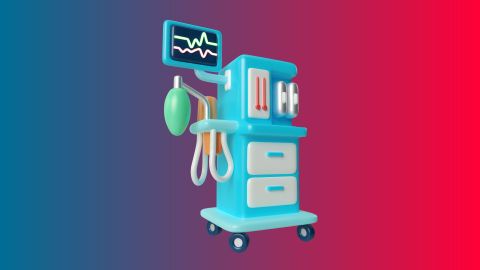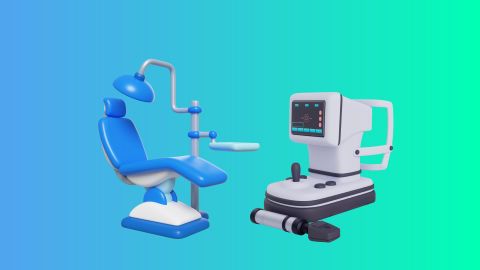Are you considering purchasing a cautery machine but want to understand its significance and pricing before making a decision? You have come to the right place. A cautery machine is a vital tool in surgical and medical settings, used to stop bleeding and remove abnormal tissues. This article covers everything that you need to know about cautery machines, including their meaning, types, uses, importance, and prices. Moreover, we will guide you on how to finance your purchase with Bajaj Finserv Medical Equipment Finance, making it easier for healthcare professionals to equip their facilities without financial strain. Whether you are a surgeon, a healthcare provider, or a buyer, read on to get a comprehensive overview of cautery machines and the best options available.
What is a Cautery Machine?
A cautery machine is a medical device used to destroy abnormal tissue or stop bleeding by using heat or electricity. It is commonly utilised in surgeries to achieve hemostasis, which is the process of stopping bleeding. The device works by passing direct or alternating current through a resistant metal wire probe, generating heat that helps to coagulate tissue or cauterise blood vessels. There are different types of cautery machines like electrocautery, chemical cautery, laser cautery, and radiofrequency cautery, each serving unique purposes in medical and surgical procedures.
Cautery Machine Uses
Cautery machines play a crucial role in both thermal and surgical applications. They are widely used in surgical diathermy to accomplish hemostasis and tissue damage control. Some of the primary uses of cautery machines include:
- Stopping bleeding during surgical procedures.
- Removing warts, skin tags, and other growths.
- Cutting tissues in surgery.
- Treating abnormal skin growths.
- Managing chronic nosebleeds by cauterising blood vessels.
By using cautery machines, healthcare professionals can perform precise surgeries with minimal blood loss, enhancing patient safety.
Types of Cautery Machines
Different types of cautery machines serve specific purposes in medical settings. Here is a breakdown of the most commonly used cautery machines:
1. Electrocautery
Electrocautery is the most commonly used type of cautery machine that uses an electric current to produce heat for cutting or coagulating tissues. It is especially effective in dermatological surgeries and gynaecological procedures to remove growths like warts or uterine tissue.
2. Chemical Cautery
Chemical cautery involves the use of a chemical substance to burn or destroy tissue. It is primarily used for:
- Removing small skin lesions.
- Controlling minor bleeding.
- Treating superficial growths.
3. Laser Cautery
Laser cautery utilises laser beams to precisely target and remove abnormal tissues. This method is highly effective in delicate procedures such as:
- Endoscopy.
- Ophthalmology surgeries.
- Dermatological treatments.
4. Radiofrequency Cautery
Radiofrequency cautery employs high-frequency electrical currents to produce heat, which is used to cut or coagulate tissues. It is particularly useful for surgeries involving the gastrointestinal tract or for removing polyps from the diverticula.
Importance of Cautery Machine
A cautery machine is crucial in modern surgical procedures for its precision and effectiveness in controlling bleeding and removing unwanted tissue. Its benefits include:
- Minimising blood loss during surgery.
- Reducing the risk of infection.
- Enhancing the precision of surgical procedures.
- Allowing faster recovery for patients.
- Reducing surgical time and cost.
Innovations in Cautery Machines
Listed below are some innovations in cautery machines:
- Cautery machines now incorporate diverse energy sources, such as advanced radiofrequency, ultrasonic, and laser technologies, enabling more precise and efficient tissue handling.
- Contemporary machines offer improved control over energy output, allowing surgeons to customise treatments for various tissues and procedures.
- Enhanced safety features, such as real-time tissue feedback and monitoring, help minimise the risk of complications during surgeries.
- Electrode designs have been innovated to improve performance, durability, and patient safety.
- Some modern cautery machines are highly portable, making them suitable for a broader range of clinical applications.
Prices of Cautery Machines in India
The price of cautery machines can vary based on the type and features. Here is a table highlighting the average prices of different types of cautery machines available in India:
Product Name |
Price (INR) |
Technocare Quick Turn Smart 250 Cautery Machine |
Rs. 28,990 |
Technocare Surgical Smart 4 Cautery Machine |
Rs. 48,800 |
Orion HA400 Electrosurgical Cautery Machine |
Rs. 95,000 |
BPL Surgix - VS1 Cautery Machine |
Rs. 688,999 |
BPL Surgix - E2 Cautery Machine |
Rs. 146,000 |
How to select the right cautery device?
Selecting the right cautery device for medical procedures is essential for ensuring effective treatment while minimizing complications. Here’s a guide to help you choose the right cautery device:
- Type of surgery: Different surgeries require different cautery devices. Choose a device suited for the specific procedure you are performing (e.g., general surgery, dermatology, or gynecology).
- Power output: Select a device with adjustable power settings to manage the intensity based on the procedure’s requirements.
- Device features:
Cutting vs coagulation: Choose devices with settings for cutting or coagulation (stopping bleeding), depending on your needs.
Bipolar vs monopolar: Bipolar devices are used for more precise applications, whereas monopolar devices are better for general use.
- Safety features: Ensure the device includes safety mechanisms like grounding and insulation to prevent electrical burns or shocks.
- Ease of use: Look for devices that are easy to control with ergonomic handles, clear displays, and intuitive controls.
- Portability: If you need a device for different locations, consider a portable cautery unit for ease of use and mobility.
- Maintenance and durability: Select a device that is easy to clean, maintain, and is made of durable materials to ensure long-term functionality.
- Cost and warranty: Evaluate the cost against the benefits and check if the device comes with a warranty for added peace of mind.
Cautery device comparison
Feature |
Monopolar cautery |
Bipolar cautery |
Power source |
Uses a single electrode, requires a return electrode (grounding pad) |
Uses two electrodes for precise control of energy flow |
Application |
General surgeries, removal of tissue |
Fine and delicate procedures like eye surgery, skin lesions |
Precision |
Less precise, higher risk of tissue damage |
More precise, reduces collateral damage |
Use in blood vessels |
Can be used but with risk of excess tissue damage |
Ideal for controlling small blood vessels without affecting surrounding tissue |
Safety |
Grounding pad required, risk of burns |
Lower risk of burns due to precise targeting of energy |
Cost |
Typically more affordable |
Generally more expensive due to advanced technology |
Choosing the right cautery device will depend on the specific needs of your medical practice, the type of surgery, and safety concerns. Always consider device features that ensure efficiency and minimize complications.
Buying Guide for Cautery Machine
When buying a cautery machine, consider the following factors:
- Type of procedure: Choose based on the specific surgical needs.
- Budget: Ensure that the machine fits your budget while meeting quality standards.
- Durability: Opt for machines made with high-quality materials for long-term use.
- After-sales service: Check for warranty and support services.
Tips for maintaining and caring for cautery machines
- Regular cleaning: Wipe the machine with a soft, damp cloth after each use to remove debris and prevent buildup.
- Inspect electrodes: Check for wear or damage before every procedure and replace if necessary.
- Calibrate periodically: Ensure accurate performance by calibrating the machine as per manufacturer recommendations.
- Store safely: Keep the machine in a dry, dust-free environment to prevent damage.
- Avoid overloading: Operate within the specified voltage and usage limits.
- Service schedule: Follow the maintenance schedule provided by the manufacturer for professional servicing.
- Training: Ensure operators are well-trained to handle the machine correctly.
Financing Options to Buy a Cautery Machine
Purchasing medical equipment can be expensive, but there are financing options available to ease the burden. Bajaj Finserv Medical Equipment Finance provides flexible loans for purchasing medical equipment, including cautery machines. With features like quick approval, minimal documentation, and flexible repayment options, you can now equip your facility without financial stress.
Conclusion
A cautery machine is an indispensable tool in any surgical setup. Its versatility, precision, and efficiency make it a must-have for healthcare professionals. With various types and uses, it is essential to choose the right machine for your needs. Do not let the price be a deterrent; explore financing options like Bajaj Finserv Medical Equipment Finance, hospital loans, professional loans and even a doctor loan for hassle-free purchases. Investing in a quality cautery machine not only improves the quality of care but also enhances the efficiency of your practice.
Check Below Related Machines
| CBC Machine |
| Echo Machine |
| Oxygen Concentrator Machine |
| BiPAP Machine |




